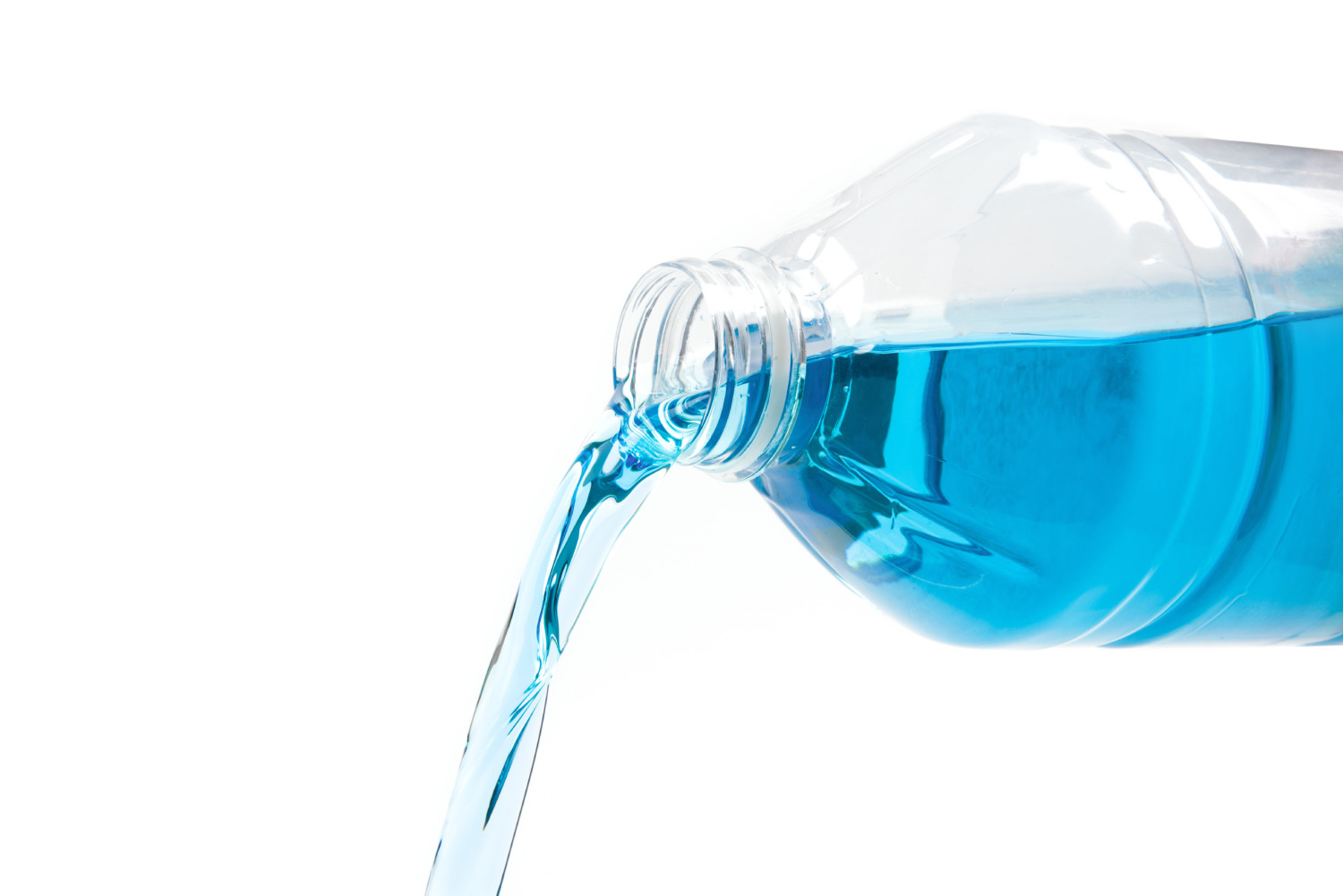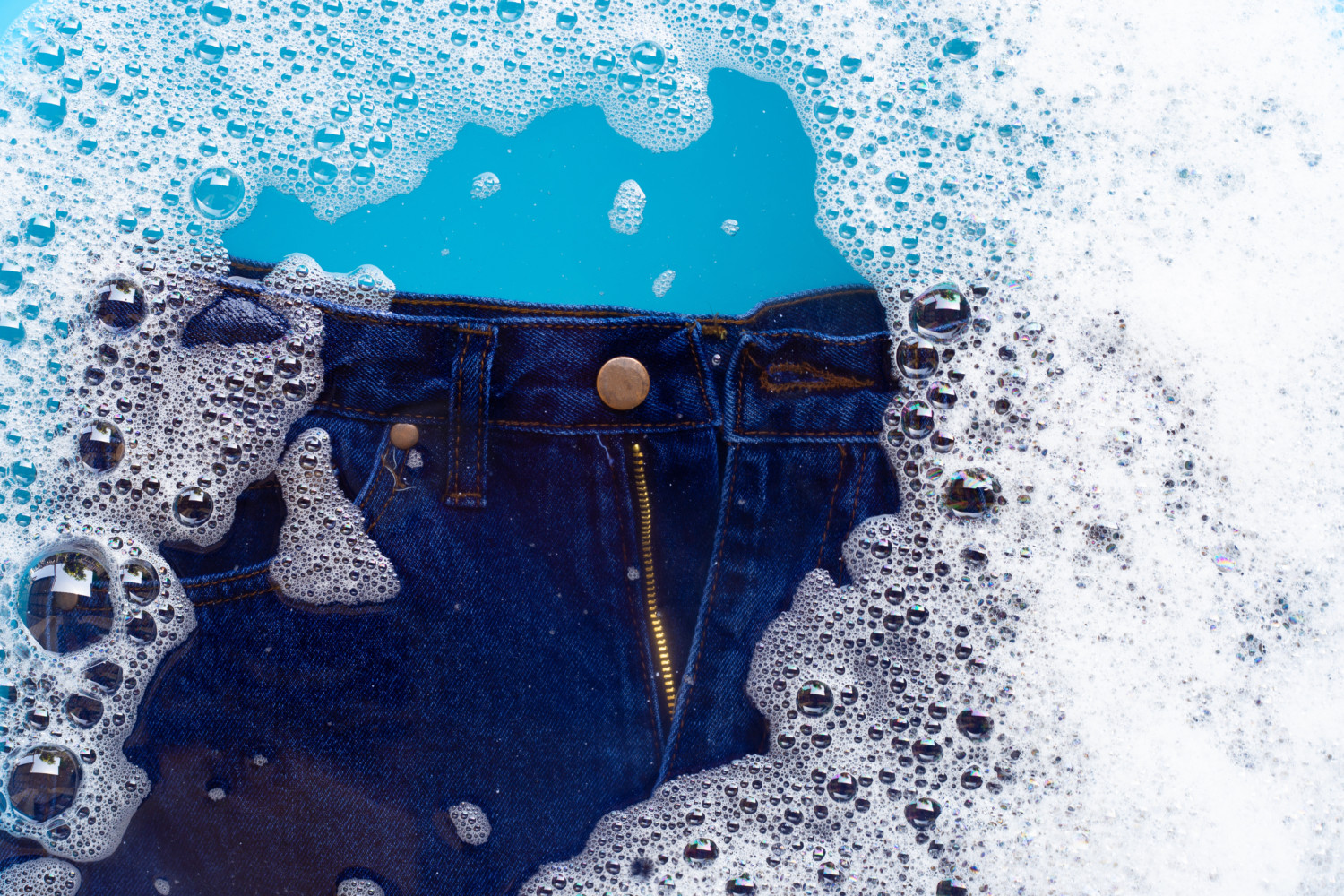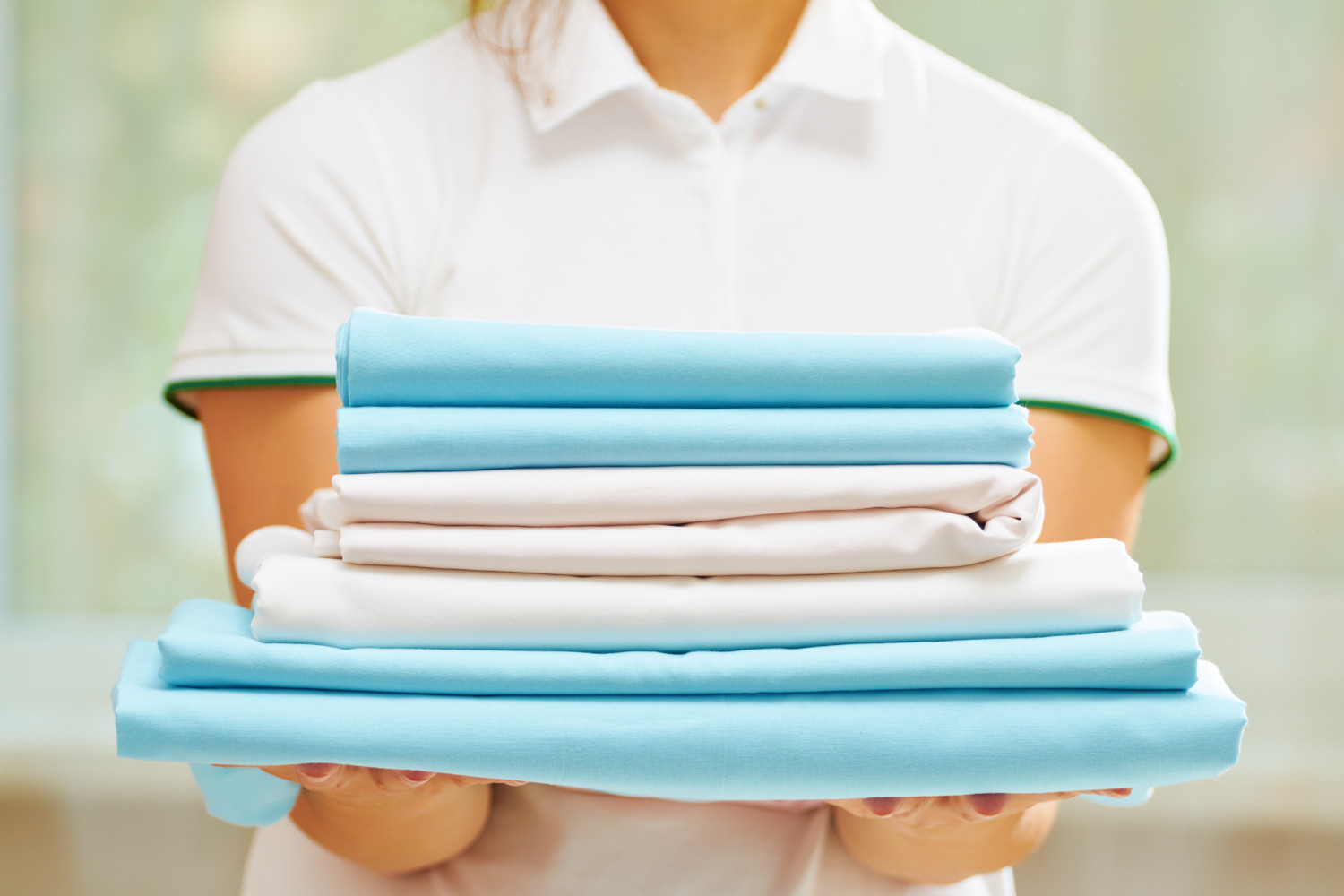The products and services mentioned below were selected independent of sales and advertising. However, Simplemost may receive a small commission from the purchase of any products or services through an affiliate link to the retailer's website.
You’re a pro at using bleach, pre-treating stains and adding color boosters to your load, but when it comes to the idea of laundry bluing, you’re stumped. Unless you’re talking about a load of denim, why would anyone want to make their laundry blue?
The name laundry bluing is somewhat misleading. Although it is blue in color, laundry bluing is a liquid additive that can be used to correct color fading and produce brighter whites. It has been used for centuries. Today, it’s still used by clothing and linen manufacturers to make whites even brighter before you buy them.
What Is Laundry Bluing?
Laundry bluing includes a pigment called Prussian blue (ferric ferrocyanide) that gives an optical illusion, allowing laundry to appear whiter. Bluing reduces yellowing and keeps whites from looking dingy by reflecting light off of the fabric, making whites look brighter. Bluing is usually added directly into the wash cycle. And, yes, it can even enhance the shade of your favorite jeans. You should know, however, it is not a detergent or a stain lifter.
Laundry bluing is available at most supermarkets and hardware stores. It is very affordable (typically less than $5), and a bottle will last a long time since very little is needed. You can also get an 8-ounce bottle of Mrs. Stewart’s Concentrated Liquid Bluing on Amazon for $6.24 right now.

How To Use Laundry Bluing In Your Washing Routine
Using laundry bluing regularly can help keep your white laundry items looking fresh and vibrant for longer. Start by pre-treating any stains before adding them to the washing machine. Avoid adding bluing directly to the washer. Instead, dilute the bluing in at least a quart of cold water. A few drops will work for a small load, but you can add up to 1/4 teaspoon of bluing liquid to the water for larger loads.
Stir until it the laundry bluing is dissolved in the water. When it is well-blended, the water should appear to be sky blue. Then, add the mixture to either the wash water or the final rinse.
If you have a front-loading or another high-efficiency washing machine, you can pour the water and bluing mixture into the dispensing drawer after the washer has filled with water, as long as the dispenser remains unlocked during the cycle.
To darken denim or other blue or even black fabrics, dilute up to one teaspoon of bluing per quart of water. You can add the water mixture to your washer or soak the garments in a porcelain sink or tub (the bluing will stain fiberglass fixtures) or a metal bucket. Follow the instructions on the bottle, which generally include soaking the garments and then rinsing them.

How To Remove Excess Bluing
If you were a little overzealous when adding the bluing and your items look stained or dark, you can use a mixture of cold water and ammonia to remove the excess. Add one-half cup of household ammonia for each quart of water in a container that you can cover tightly. Five-gallon plastic buckets with lids are ideal.
Important note: Do not use a metal container, as the ammonia could cause a dangerous reaction.
Submerge the item that has been stained with bluing in the liquid and close the lid tightly. Let it soak for 24 hours. If the stain remains, make a new batch of ammonia water and try again. Finally, launder the item in a regular cycle in the washer with laundry detergent only.

Dos And Don’ts Of Using Laundry Bluing
When it comes to laundry bluing, there are a few common mistakes that people make and best practices that can affect the final results.
- Avoid using too much, as this can leave you with blue stains.
- If you don’t want to stain the container, combine water and laundry bluing in a glass jar; the color will come off on plastic.
- Never use bluing with chlorine bleach, fabric softener or other laundry products. Doing so can cause spots and discolorations on your garments.
- For best results, use bluing before items are too dingy to keep whites looking their best.
- Laundry bluing can be used on white and colored fabrics, so don’t be afraid to experiment.
- Finally, use caution when handling laundry bluing, as it can irritate skin and eyes if not handled properly.
Overall, bluing is a great way to brighten your laundry. With a bit of care and attention, your whites will be sparkling clean.
This story originally appeared on Simplemost. Check out Simplemost for additional stories.


